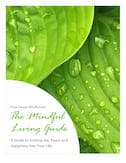We all know the rules of money:
- Make a budget and stick to it
- Save 10% in a fund you don’t touch
- Give 10%
- Spend less than you make
These are the simple basics. So why do so few of us actually do these things?
- I can’t afford to save or give
- Budgets aren’t realistic
- I can’t be confined to rules like these
- I deserve to have the things I want
- But what about my needs?
While we like to call them “reasons,” these are all just excuses and I’m guilty of using all of them.
These “reasons” are all driven by feelings and emotions we have that usually have nothing to do with how we’re about to spend our money.
Our financial situation is a reflection of our self-image and self-esteem.
This is one of the lessons of the saying: “You are the average of the five people you spend most of your time with.”
Most people spend most of their time around the people with whom they’re comfortable, people who don’t threaten or challenge their self-image or self-esteem.
I think it’s time we start pushing the boundaries of our comfort zones. Feel the fear and do it anyway kind of thing.
Feelings Around Money
How do you feel when you spend money? Obviously it depends on what you’re spending the money on so consider your feelings when you spend money on:
- food
- housing (mortgage or rent)
- clothing
- gifts
- art
- furnishings
- your career or business
- vehicles
- entertainment
- debt
- travel
- charity
- education
- pets
- savings
- medical expenses
- taxes
- fun
Each category probably stirs up different feelings, some strong and some almost non-existent. Notice them.
Do you take a moment to notice those feelings right before you commit your life energy (money) to that thing? I think most of us would probably make different decisions if we took a moment to notice and consider such questions as:
- How do I feel right now?
- Am I buying this to placate my feelings or am I fulfilling a real need?
- How will I feel about this purchase tomorrow, next week, next year?
- Does making this purchase take me away from fulfilling other goals?
- Can I wait to make this purchase?
Each dollar spent today is more than a dollar we take from our future.
Make a Different Choice
I challenge you to make a different choice in how you spend your money for one week.
First of all, try not buying things you normally buy. Things like lunches or dinners out, coffee, clothing. Think of alternatives that cost less or nothing at all or go without.
For all the things you probably need to buy, like groceries, pay in cash. Not with a debit card or anything else that resembles plastic. Just cash – bills and coins. You’ll think about the purchase differently.
At the end of the week, notice if you spent less money and, if so, how much less.
More importantly, notice how you feel about yourself and your finances at the end of the week.
Tweak it a little based on what you learned and try it for another week. And one more week. Twenty-one days makes a habit.
If you need support, turn it into a challenge for you and your friends. When you feel like breaking the rules, call one of your participating friends and ask them for support.
Back To the Rules
After noticing your thoughts and feelings about your daily financial habits, consider your thoughts and feelings about the rules of money. What comes up when you slowly read each rule?
What is the origin of those thoughts and feelings?
Did you choose them or are they just part of the programming you received growing up?
Given the choice, would your freely choose them or something different?
You have that choice.
You can change your thoughts and feelings that create your actions that create your results.
Simple Steps
As Steven Covey would say: Begin with the end in mind. What kind of result do you want? What actions would create that result? What feelings would create those actions? What thoughts would create those feelings?
Make yourself have those thoughts. Write them down and put them everywhere: on your bathroom mirror, on your refrigerator, on the dashboard of your car, in your wallet, next to your bed, on the ceiling above your bed, everywhere.
Say them to yourself as you’re waking up and as you’re going to sleep and many times throughout your day.
And, most importantly, make sure you’re feeling good as you’re having those new thoughts. Do things you enjoy. Look at or think of beautiful people who you love. Envision all the things for which you’re grateful.
Your financial future really has no relation to your financial past. There are plenty of examples of people who have gone from homeless to incredibly wealthy. It’s a choice. Your choice.
Create the life you want: Combine the law of attraction with mindfulness
The law of attraction suggests that our positive or negative thoughts bring about positive or negative experiences. My latest book, The Mindful Guide to Law of Attraction, pairs that belief with the powerful practices of mindfulness. Through intentional breathing, writing, and engaging, you’ll hone a method for manifesting health, wealth, and love―the elements of happiness.
Let the law of attraction work for you by adopting its basic steps of identifying and visualizing the things you desire. Then use 45 practical meditation techniques included in the book to achieve awareness. By concentrating your positive energy on obtaining your wants, you’ll give yourself permission to receive them.
To your happiness! ~Paige

You can find this book at Amazon, Barnes & Noble, Books-A-Million, and Indigo.






 The Mindful Living Guide
The Mindful Living Guide




Paige….I could have used your advice before I bought sunglasses on Saturday. I actually don’t spend a lot of money on clothes and accessories….practically nothing in Israel because it’s so expensive. But I desperately needed a pair of sunglasses for rowing. Friday morning I was rushing to get to the Farmer’s Market to buy a certain type of lettuce that I love…and guess what? I passed a store that had a great selection of sunglasses. An hour later…..I walked out with 3 pairs of sunglasses. They had a buy one, get 2 free promotion. SO….I was seduced and ended up buying a more expensive pair of glasses than I normally would…and got 2 pairs free…BUT I don’t need them. Believe me, I didn’t feel good about myself afterwards but I was able to chalk it up to being a cheap lesson. xxoo-fran
At least you noticed what you did and learned from it, which is the important part Fran. And the store seems to have a great marketing plan going. Markup’s on sunglasses are crazy! Look at it this way: Maybe you don’t need three pair now but it will be three times longer before you need another pair. And you got three pair for a deal.
Happy rowing!!
XOXOXO
Hi Paige,
This is really challenging stuff!
I could feel myself immediately saying, “What? No Starbucks this week? I can’t do that!”
😉
Too funny Bobbi! I say the same thing. I love my Starbucks! Living up in the mountains, I only go into town about once a week and Starbucks is one of my little treats to myself on those days.
It’s always good to at least think about where we spend our money and notice our feelings about it.
Thanks Bobbi!
I love the accountant in you speaking. Managing finances is a very simple process depending on how we perceive the whole thing. I’ve never had an issue with it even when I was near broke, not from overspending, but simply because there wasn’t enough. The point is to take positive action towards what our goals are.
Wonderful post. And I love how you formatted it, me being a list-maniac.
Thanks Vidya! I think managing finances is one of those simple but not easy things. The mechanics are fairly easy for most but the emotional part of sticking to it can be difficult, if we let it be.
I find it interesting how I can see money very objectively in my job, but when it comes to my own personal finances, it’s a whole different ball game with all the old programming, beliefs and emotions tied in.
Maybe it’s that shared birthday thing that makes us click. 🙂
Another great post Paige. If I won’t stop myself, I might end up not sleeping at all tonight just to read your blogs. I particularly love this line: Our financial situation is a reflection of our self-image and self-esteem. People should get away from their comfort zones to stretch their limitations and capabilities.
Don’t want to keep you up too late, Spatch. There’s always tomorrow.
Yes, stretching ourselves is the only way we’ll ever achieve something great. Go for it!
I had not thought about finance and emotions and feelings – but you are right, each item elicits different emotions. Let me try this out for a week, esp as I’m leaving my corporate job and wont have an income for a while! Will let you know how it goes!
Noch Noch
Yes, please let me know how it goes! I’m sure many other readers would like to know as well. There are so many people who want to leave their corporate jobs but fears around lack of money keep them where they are. I’ve experienced it before and know that it’s not nearly as bad as most people imagine. Can’t wait to hear how it goes for you!